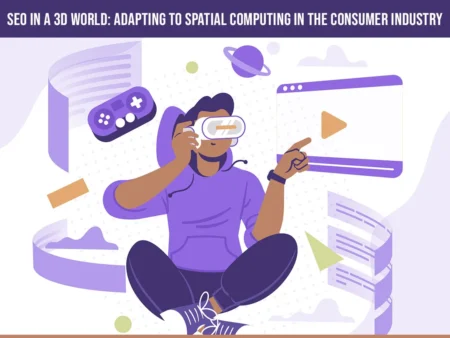
Spatial computing is poised to redefine the consumer industry by seamlessly integrating the digital and physical realms. The introduction of Apple Vision Pro has offered a tantalizing glimpse into the future, showcasing the immense possibilities this groundbreaking technology holds. This article explores the transformative potential of spatial computing in the consumer sector and examines how SEO companies will play a crucial role in leveraging this technology for business growth and enhanced customer experiences.
Introduction to Spatial Computing
Spatial computing refers to a technology that enables interaction with digital or virtual content in a three-dimensional space. It encompasses augmented reality (AR), virtual reality (VR), mixed reality (MR), and artificial intelligence (AI). This technology allows users to interact with digital environments in a more natural and intuitive way, blending the physical and virtual worlds seamlessly.
Transforming the Consumer Industry
- Enhanced Shopping Experiences: Spatial computing is set to revolutionize the shopping experience. Virtual showrooms and augmented reality fitting rooms will allow consumers to try products virtually, from clothing to furniture, ensuring a better fit and look before purchasing. This not only enhances customer satisfaction but also reduces return rates.
- Personalized Marketing: With spatial computing, businesses can create more personalized and engaging marketing campaigns. By understanding a consumer’s interaction in a three-dimensional space, companies can tailor their marketing efforts to individual preferences and behaviors, offering a more targeted and effective marketing strategy.
- Immersive Product Demonstrations: Products can be demonstrated in a much more immersive and interactive way. For instance, a customer could use AR to see how a new kitchen appliance would function in their own kitchen or use VR to experience a new car’s features in a virtual test drive.
- In-Store Navigation and Assistance: In physical stores, AR can guide customers to the products they are looking for while providing additional information or promotions directly in their field of view. This enhances the shopping experience and can lead to increased sales.
- Remote Assistance and Virtual Consultations: Spatial computing enables experts to provide real-time assistance or consultations remotely. For example, in a fashion store, a stylist could virtually assist a customer trying on clothes, providing advice and recommendations.
The Role of SEO Companies in Leveraging Spatial Computing
SEO (Search Engine Optimization) companies, traditionally focused on optimizing content for search engines, will find a new and expanding role in the era of spatial computing. As spatial data becomes more integral to consumer experiences, these companies will need to adapt and evolve.
- Optimizing for Spatial Searches: SEO companies will need to develop strategies for optimizing content for spatial searches. This includes ensuring that virtual spaces and AR content are easily discoverable and rank well in search results.
- Content Creation for 3D Spaces: As businesses create 3D environments for their products and services, SEO companies will play a key role in creating and optimizing this content. This requires a deep understanding of how users interact with 3D spaces and how to make these interactions more engaging and relevant.
- Analytics and Data Interpretation: Spatial computing will generate vast amounts of data regarding how consumers interact with 3D environments. SEO companies will need to analyze this data to provide insights into consumer behavior, preferences, and trends, helping businesses to refine their strategies.
- Integrating with AI and Machine Learning: To optimize for spatial computing effectively, SEO companies will need to integrate AI and machine learning technologies. This will enable more sophisticated analysis and prediction of consumer behavior in 3D spaces.
- Collaborating with Tech Developers: SEO companies will need to collaborate closely with technology developers to understand the capabilities and limitations of spatial computing technologies. This collaboration will be crucial for developing effective optimization strategies.
Conclusion
The advent of spatial computing is heralding a transformative era in the consumer industry, characterized by immersive experiences, personalized engagement, and innovative marketing strategies. As businesses navigate this new digital landscape, the role of SEO companies becomes increasingly vital. Among these, Local SEO Tampa Company stands out as a pioneer, ready to guide businesses through the intricacies of this revolution.
Moreover, their understanding of local market dynamics makes them an ideal partner for businesses looking to capitalize on spatial computing technologies to enhance their local presence. Their strategies are not just about adapting to spatial computing; they’re about mastering it to provide hyper-localized, immersive experiences that resonate with the community and drive local engagement.
Picture Credit: Freepik
